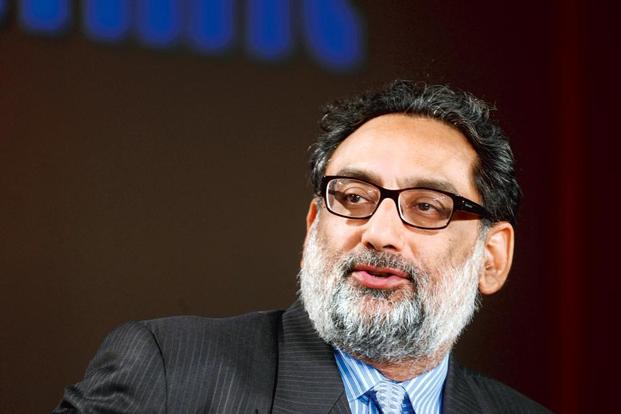Kashmir Review Desk
Srinagar Dec 31: Former Finance Minister of J&K, Haseeb Drabu has debunked the myth of discrimination against Jammu in the political structure of Muslim-majority J&K, saying it fits more snugly with the ideological narrative of Hindu discrimination than with any empirical facts.
Ignoring population as the main criteria to delimit Assembly constituencies, the Delimitation Commission has proposed six new seats for Jammu and just one seat for Kashmir, triggering widespread criticism from major political parties in the region.
Drabu blasted the Delimitation Commission for its adventurism in playing around with the most cardinal principle of the adult franchise “one person, one vote”. “A dangerous precedent is being set as yet another institution bites the dust,” Drabu wrote in an article in Indian Express, adding it will have serious ramifications across India in the future.
As per the 2011 census, J&K had population of 1,22,67,013 with Kashmir’s population as 68,88,475 (56.15%) and Jammu’s population as 53,78,538 (43.85%).
The total number of Assembly seats in Kashmir was 46 with an average of 1,49,749 per seat while as in Jammu it was 37 with the average population for each seat as only 1,45,365.
So Jammu had nearly 4000 people lesser in each Assembly constituency than Kashmir. Hence, most of the new seats created should have been allotted to Kashmir instead of Jammu, political parties in Kashmir said.
Jammu, a Hindu majority division, is widely perceived to have been discriminated against and underrepresented in the political superstructure of the Muslim majority J&K.
However, Drabu says the facts are to the contrary. “Jammu, with a 43 per cent population share had a 43 per cent share in the legislative assembly. While Kashmir with a 55 per cent share in the population of the state, had a 53 per cent seat share. Ladakh, as part of the erstwhile state, had a two per cent share in population and four per cent in the assembly,” Drabu said.
The proposal will take the number of Assembly seats in Jammu to 43 from the existing 37 and to 47 in Kashmir from 46.
Experts say the criticism of the delimitation commission’s proposal is genuine because 56% of the population lives in Kashmir which has been proposed to get only 52% seats in the legislative assembly.
Population share
Kashmir: 56.2% Jammu: 43.8%
Existing seat share
Kashmir: 55 4% Jammu: 44.6%
Proposed seat share
Kashmir: 52.2%. Jammu: 47.8%
Far from seeking to end the non-existent discrimination against Jammu, the Commission has introduced an imbalance in the regional representation, Drabu said.
In the last assembly, out of 87 MLAs, 52 were Muslims, 33 Hindus and two Buddhists. As such, while Hindus accounted for 28 per cent of the population, they had a 38 per cent representation in the assembly. As against this, Muslims, who are 67 per cent of the population, accounted for only 60 per cent of the legislative assembly. “So much for discrimination of Jammu Hindus and domination by Kashmir Muslims,” he said.
“That Jammu has been underrepresented since 1951 fits more snugly with the ideological narrative of Hindus being discriminated in the Muslim majority state than with any empirical facts,” he said.
He said the near-ideal balance of regions and religions in the J&K assembly thus far is in stark contrast to the share of minorities in the representation pie of other states.
In Assam, for instance, Muslims whose share in the population is 34 per cent, constitute only 22 per cent in the state legislative Assembly. In Kerala, the Muslim minority of 27 per cent has a 21 per cent state share in the assembly. In West Bengal, a 27 per cent population share translates into a 17 per cent seat share in the Assembly.
“Instead of emulating the fair minority representation in J&K in the past, the Commission has introduced a brazen bias towards Jammu. In doing so, it has shown scant respect for the only universally accepted criteria for distribution of electoral constituencies, which is population,” he said.
Drabu said the actual electoral cartography could very well see pockets of Muslim concentration, especially in districts in Pir Panchal and Chenab belt, like Doda, Kishtwar and Rajouri, being dispersed across constituencies to dilute their numerical strength. “Lest it sounds conspiratorial, this has happened earlier. A case in point is Assam where the Muslim-majority pockets of Kajidahar, Chandpur and Nagdirgram in the Sonai constituency were amalgamated with the Dholai seat to subsume them numerically,” he said.
He said even before the Delimitation Commission headed by Justice Ranjana Desai was constituted, its mandate and jurisdiction with respect to J&K were severely curtailed. “Two of its three key decisions were pre-empted by legislative fiat,” he said.
Circumventing the Delimitation Act of 2002, the Union government increased the number of seats in the legislative assembly of J&K from 107 to 114 through the J&K Reorganisation Act, 2019, Drabu said.
“The Union government also predetermined the population base: Clause xi of the J&K Reorganisation Act, 2019 stipulated the 2011 Census as the basis for delimitation. In all other states, including the four going in for delimitation along with J&K, the 2001 census is being used in accordance with the Delimitation Act of 2002,” he said.
Drabu said, “By doing this, the Union government has ridden roughshod over the Delimitation Commission, which has the sole prerogative to decide on both these matters.”
As spelt out, clause 8(b) of the Delimitation Act of 2002, mandates and empowers the Delimitation Commission to decide on “the total number of seats to be assigned to the Legislative Assembly of each State and determine on the basis of the census figures”.
Having been belittled and bypassed even before its constitution, the only job left to the Commission was to distribute the seven pre-determined additional assembly seats, he said.




